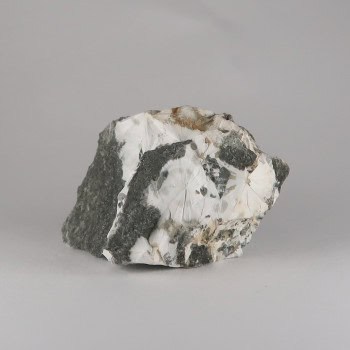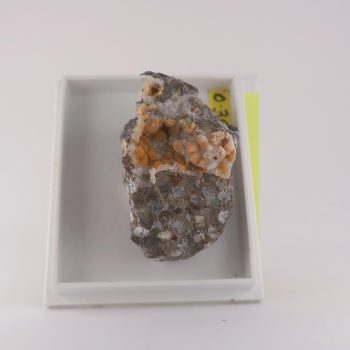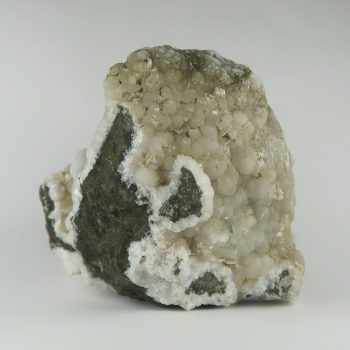Thomsonite
Thomsonite is a series of Zeolite minerals including thomsonite-Ca and thomsonite-Sr. The two species are visually indistinguishable, so Thomsonite is used as an overall name unless laboratory analysis has been done.
Showing all 3 results
-

Thomsonite from Lomba dos Pianos quarry, Portugal
£3.50 – £7.50 -
New

Thomsonite from Punta del Aguila, Lanzarote, Spain
£15.00 -

Thomsonite specimens from Ljósá Quarry
£50.00
Information about Thomsonite
Appearance
Thomsonite is a zeolite group mineral which can be fairly variable.
Thomsonite often occurs along with other zeolites in the amygdaloidal cavities of volcanic basalt.
As far as I’m aware there are no real commercial uses for Thomsonite, and it is primarily used as specimens.
Mineralogy
Thomsonite is a zeolite group mineral species, with the two minerals being thomsonite-Ca and thomsonite-Sr.
- Thomsonite-Ca has the formula NaCa2Al5Si5O20·6H2O
- Thomsonite-Sr has the formula NaSr2Al5Si5O20·6H2O
Hazards and Warnings
Mineral collectors should wash their hands after handling specimens, to avoid any exposure to potential toxins.
Almost all rocks, minerals (and, frankly, almost all other substances on earth) can produce toxic dust when cutting, which can cause serious respiratory conditions including silicosis.
When cutting or polishing rocks, minerals, shells, etc, all work should be done wet to minimise the dust, and a suitable respirator or extraction system should be used.
Translations
Arabic:
Hindi:
- थॉम्सोनाइट
Portuguese:
Bengali:
- থমসনাইট
Indonesian:
Punjabi:
English:
- thomsonite
Italian:
Russian:
- Томсонит
French:
Japanese:
- トムソナイト
Spanish:
- Thomsonita
German:
- Thomsonit
Korean:
Thai:
- ทอมโซไนต์
Gujurati:
- थॉम्सोनाइट
Mandarin Chinese:
Urdu:
